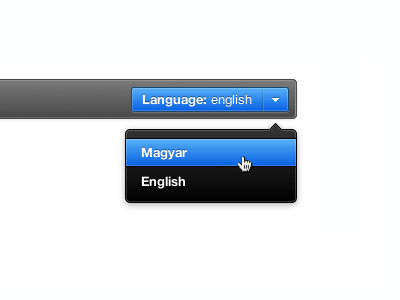

- Language switcher widget install#
- Language switcher widget update#
- Language switcher widget registration#
- Language switcher widget code#
Product URLs, such as /products/large-white-t-shirt, aren't translated and remain in the language that they were created in, even when a customer is viewing the site in another published language.Ĭhanging the default language of your online storeĪfter you change the default language of your online store, your previous default language is removed from the drop-down menu in Settings > Languages. Tags (such as product tags, article tags, and blog tags) can't be translated. Only compatible third-party translation apps are supported by this feature. Limitations of selling in multiple languages To check if an app supports multiple languages, contact the app's developer. If you use third-party apps, then it is possible that those apps don’t support selling in multiple languages by default. Shopify automatically adds hreflang tags, and includes all published languages in sitemaps, which help search engines detect the different languages on your store. It's important that search engines can index your site in all the translated languages.

You can also have different languages available on different domains by using the international domains feature in Shopify Markets. The rest of the domain remains the same in all languages. If you publish two additional languages, French (fr) and German (de), then your store URLs will change to /fr and /de.
Language switcher widget code#
This is done by adding the language code to the URLs.įor example, suppose your primary domain is. When you publish a language, unique URLs are created for each translated page in your store. Alternatively, you can follow the instructions to import your translations directly into Shopify.Ī major aspect of selling in multiple languages is making sure that customers and search engines can find the right language version of your site. The Shopify Translate & Adapt app, or a compatible third-party translation app. If you're using another theme or an older version of the theme, then you can add a language selector using the Geolocation app by Shopify. If you're using a third-party theme, then you can contact your theme developers to check if it's compatible.Ī theme that has a language selector.
Language switcher widget update#
You might need to update your theme for it to be compatible with selling in multiple languages. All the free themes from Shopify are compatible. To sell in multiple languages, you need to have the following:Ī theme that's compatible with selling in multiple languages. Changing the default language of your online store.Limitations of selling in multiple languages.This installs and switches the site language, you can switch back if you do not want that as the default language.
Language switcher widget install#
Go to the site languages drop-down, select a language to install and save changes. To install a new language, websites administrators can use the language selector available on Settings > General.

Please note that the language list in the dropdown is based on the currently installed languages of the WordPress installation.
Language switcher widget registration#
This language switcher dropdown allows users to use the login screen, the password reset screen, and the registration screen in their own language.įilters Default Arguments For The Languages Dropdown The update of WordPress 5.9 has introduced a new login Page language switcher feature. This is a hidden feature that was only used by the interim login modal. Since WordPress 4.9, it’s possible to control the language of the login screen using the wp_lang query variable (example: wp-login.php?wp_lang=fr_FR).


 0 kommentar(er)
0 kommentar(er)
